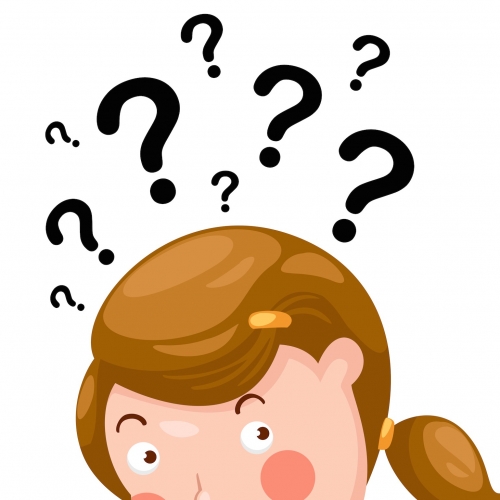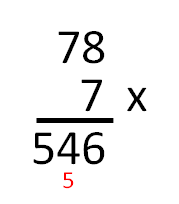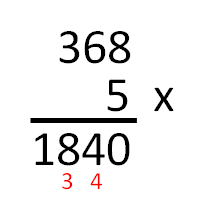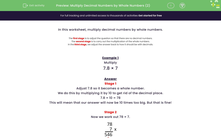In this activity, we will be multiplying decimal numbers by whole numbers.

Don't worry - we have some steps to follow!
- The first step is to adjust the question so that there are no decimal numbers. Hooray!!
- The second step is to carry out the multiplication of the whole numbers.
- In the third step, we adjust the answer back to how it should be with decimals.
Example 1
Multiply
7.8 × 7
Answer
Step 1:
Adjust 7.8 so it becomes a whole number.
We do this by multiplying it by 10 to get rid of the decimal place.
7.8 × 10 = 78
This will mean that our answer will now be 10 times too big. But that is fine!
Step 2:
Now we work out 78 × 7

Step 3:
Now, remember that this is 10 times too big.
So we divide 546 ÷ 10 = 54.6
7.8 × 7 = 54.6
The important thing is that our answer should have the same number of decimal places as our original decimal number - this means the same number of digits after the decimal point.
In our example, 7.8 has one decimal place, so our answer must also have one decimal place 54.6, which it does!
.jpg)
Example 2
Multiply
3.68 × 5
Answer
Step 1:
Adjust 3.68 so it becomes a whole number.
We do this by multiplying it by 100 to get rid of the 2 decimal places.
3.68 × 100 = 368
This will mean that our answer will now be 100 times too big. But that is fine!
Step 2:
Now we work out 368 × 5

Step 3:
Now, remember that this is 100 times too big.
So we divide 1840 ÷ 100 = 18.40 or we could write this as 18.4
3.68 × 5 = 18.4
Does that make sense?

Let's have a go at some questions now.








